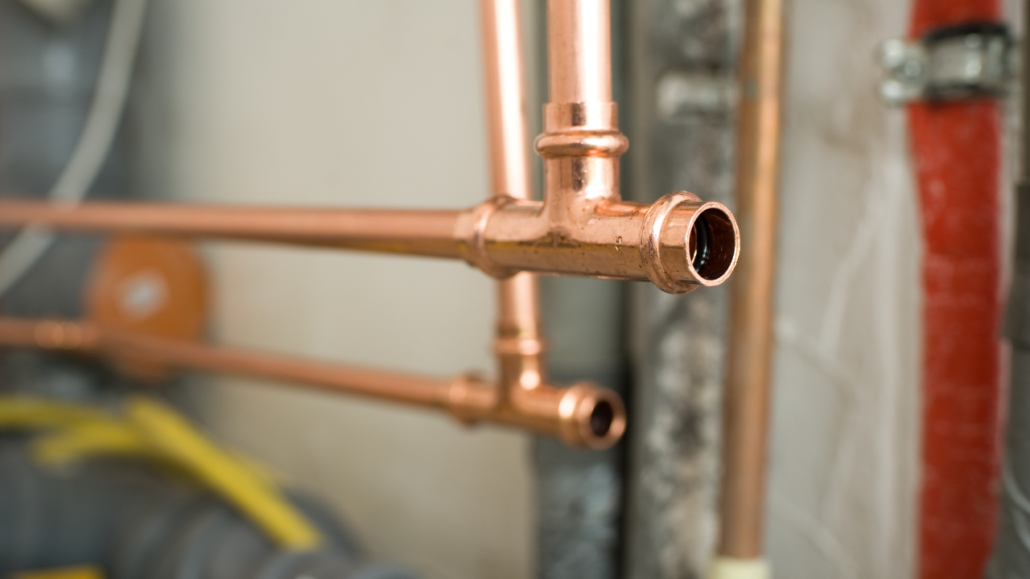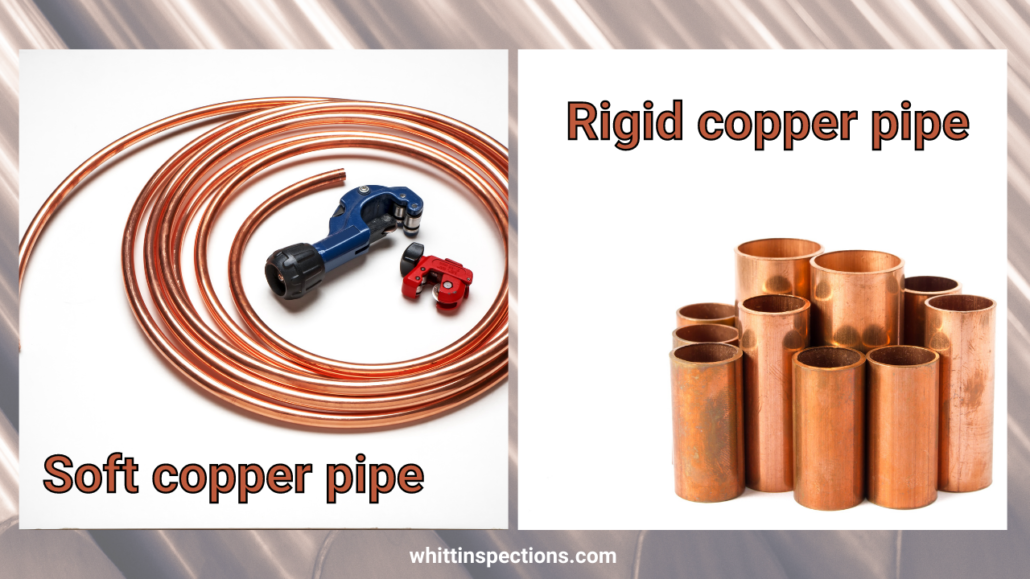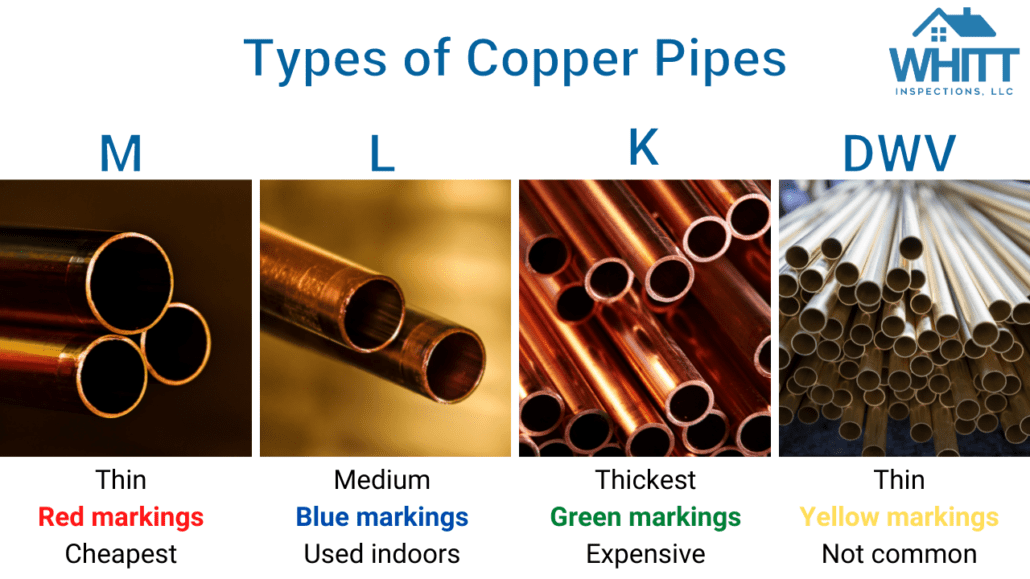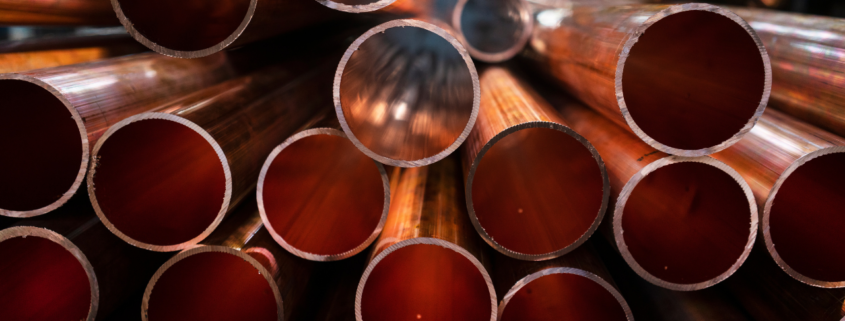Explaining The Differences Between Copper Pipe Types
As a homeowner, you may not have expected to find yourself learning about the different types of copper pipes— but here you are!
It’s always a good idea to familiarize yourself with the components of your home. It can help prevent mistakes and unexpected costs or, at the very least, arm you with enough knowledge to navigate solutions should you run into problems (i.e., a pipe leak).
Copper pipes (also known as copper tubing) are popular in modern American homes. So, chances are good that you have copper plumbing in your house. Their primary function is to move potable water (aka your everyday drinking water). They are also commonly used in appliances such as air conditioners and refrigerators.
These pipes are sturdy, reliable, and (at least in Florida) can be expected to last nearly 70 years! However, their durability all depends on the type of pipe you have. Your location also plays an important factor because some cities have higher levels of acid in their water. The higher the acidic levels are in a given area, the quicker your pipes will corrode.
RELATED: UNDERSTANDING, RECOGNIZING AND REMOVING CLOTH WIRING: YOUR COMPREHENSIVE GUIDE
Different Types of Copper Pipes

The easiest way to remember your copper pipe choices is to think of the great Dr. Martin Luther King: M.L.K. That’s because the types of copper pipe you’ll see the most often in a home are:
- Type M
- Type L
- Type K
When it comes to copper, you’ll either find rigid or soft materials. The rigid copper piping can be anywhere between 10-20 feet. Soft copper is bendable, and you’ll typically see it coiled on a hardware store shelf.
So there’s a lot to consider here: do you need soft or rigid copper piping? How long does it need to be? What is it going to be used for?
As soon as you can differentiate the types of copper pipes, you’ll know which one you need to purchase (or fix). And don’t worry— it’s pretty simple! Here’s how you can determine whether you have copper pipe M vs. L vs. K.
RELATED: WHAT YOU NEED TO KNOW ABOUT GALVANIZED PIPES

Type M Copper Pipe
M copper pipes will be your thinnest option (about 0.032 inches on a 3/4″ pipe), and also the cheapest. You can usually tell which ones are Type M by the red markings on the outside.
Because of its more delicate exterior, M copper pipes aren’t suitable for some applications. The strength and trajectory of the water may be too powerful, which means the copper is more likely to fail. However, it’s much easier to work with and is often the go-to choice in homes
for heating systems, vacuum systems, and domestic water services. Thin copper is great for interior piping because it’s the easiest to manipulate, making it a seamless option to navigate through the walls of your home.
You can find Type M in coils (soft pipes) or straight tubes (rigid pipes). They’re the most affordable option, but they also may not last as long as other types, particularly depending on the acidity of your local water supply.
RELATED: CUT ATTIC TRUSSES 101
Type L Copper Pipe
This is your medium-thickness option at around 0.045 inches for a 3/4″ inch pipe. It’s thicker than Type M but thinner than Type K copper pipes. You’ll recognize it immediately by its blue markings.
Like Type M, L pipes come in both flexible and rigid forms. Because of this and its dense exterior, you can use it for both outdoor and indoor plumbing. For outdoor use, you can use it for fire protection (e.g., sprinklers) or some HVAC systems.
Type L copper pipes are famous for their ability to replace old water lines. Since they’re thicker than M-pipes, they won’t corrode or pit as easily, making them an ideal solution for old or leaky pipes.
With so many options, Type L copper pipes are the most popular. Plus, they won’t break the bank! They typically last longer than Type M pipes, even if you have acidic or hard water.
RELATED: WHAT IS GFCI PROTECTION
Type K Copper Pipe
Of the common copper pipes, Type K one is the densest, with about a 0.065-inch thickness on a 3/4″ pipe. You’ll recognize it by the green markings on the outside.
These are used primarily for your main underground water lines, commercial installations, and HVACs. If you’ve seen a copper pipe on the outside of a house or building coming out of the ground, we can almost guarantee you it’s a Type K copper pipe.
Type K’s can withstand just about anything, including heavy water pressure and even oil distribution. They can last up to 100 years, and you can even find soft K copper pipes!
Its strength and reliability make this type of pipe the most expensive, which is why they’re primarily used for commercial applications or situations where the highest durability is demanded.
RELATED: HOW MUCH DOES A HOME INSPECTION COST IN FLORIDA?
Copper DWV Pipe
And finally, we have the DWV copper pipe. You might mistake a DWV as an M pipe at first, but it is easy to spot it by its yellow markings and, usually, its size.
DWV stands for Drain-Waste-Vent because that’s exactly what they’re used for. Modern construction prefers to use plastic P.V.C. for draining and vent systems. These are becoming more difficult to find installed in newer homes. We will see them in older homes sometimes, but often as a part of a sewage system that includes cast iron pipes.
RELATED: HOW YOU CAN SAVE MONEY ON HOME INSURANCE WITH A WIND MITIGATION INSPECTION
How To Fix Any Copper Pipe Leak

Now that you know which pipes are which, let’s talk about how to fix a simple leak.
As you may have guessed, interior leaks are most likely going to be Type M or L. But before you run off to Home Depot for a replacement line, let’s first take a look at the warning signs and what they mean:
- Green corrosion: This is known as “patina” and is copper’s version of rust. It’s an oxidation process and could be from water or air chemistry or simply because your pipe is older.
- Water: Is the water only leaking from the connection, or is water covering the entire pipe? The former means you may just need to “sweat” the tube (more on that in a sec) or use another form of repair at the connection, and the latter means you need a replacement pipe.
- Water stains on the wall/ceiling: Your pipe may just need soldering (i.e., “sweating”) at a connection, but it also may mean the pipe needs replacement.
When there’s a heavy amount of green corrosion, it may be best to have your copper pipes replaced. However, if you’re simply noticing a small leak, then all you need to do is sweat (or solder) your pipes. There are also push and compression fittings available to make water-tight connections on pipes that don’t involve soldering/sweating and fire.
Here’s a great video on how to do that!







Leave a Reply
Want to join the discussion?Feel free to contribute!